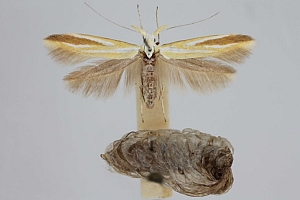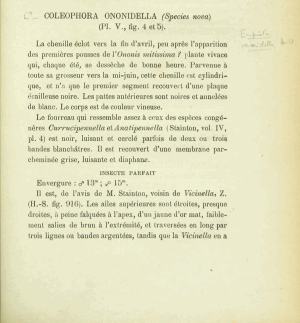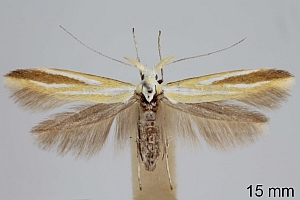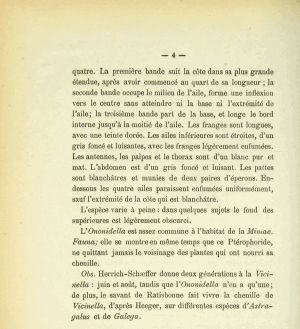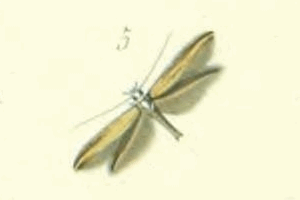Version 14 (neueste) vom 22. März 2023 um 12:34:33 von Jürgen Rodeland
Länder:

 +16Kontinente:EU
+16Kontinente:EU


 +16Kontinente:EU
+16Kontinente:EUInhalt
2. Diagnose
2.1. Geschlecht nicht bestimmt
2.2. Erstbeschreibung
1-5: Millière (1879: 3-4, pl. V figs. 4-5) [nach Copyright-freien Scans auf www.biodiversitylibrary.org]
3. Biologie
3.1. Nahrung der Raupe
- [Fabaceae:] Ononis spinosa ssp. maritima [= Ononis spinosa ssp. procurrens, Ononis repens, Ononis costae] (Kriechende Hauhechel)
- [Fabaceae:] Ononis spinosa (Dornige Hauhechel)
- [Fabaceae:] Ononis mitissima
- [Fabaceae:] Ononis natrix (Gelbe Hauhechel)
Millière (1879: 3) fand seine Raupensäcke an einer Hauhechel, wahrscheinlich Ononis mitissima. Spätere Autoren melden meist einfach "Ononis". Baldizzone (2019: 295) listet: "Piante nutrici: Fabaceae del genere Ononis (natrix, mitissima, spinosa, spinosa ssp. maritima."
(Autor: Erwin Rennwald)
4. Weitere Informationen
4.1. Faunistik
Huemer (2013) meldet die Art für Österreich nur aus Niederösterreich.
4.2. Typenmaterial
Baldizzone (1979: 76): « Type : je n'ai pu trouver dans les collections du Muséum de Paris aucun exemplaire original de Millière et je pende donc que de type est perdu. De toute façon, il me paraît inutile de créer un néotype, car l'espèce est suffisamment bien connue. »
4.3. Literatur
- Baldizzone, G. (1979): Contributions à la connaissance des Coleophoridae. XII Les espèces décrites par J. de Joannis, P. A. J. Duponchel, P. Milliere, E. L. Ragonot et M. Vallot. — Alexanor 11 (2): 65-81, pl. I-XIII.
- Baldizzone, G. (2019): Fauna d’Italia. Vol. LIII. Lepidoptera Coleophoridae. - XVII + 907 S.; Milano (Calderini).
- Huemer, P. (2013): Die Schmetterlinge Österreichs (Lepidoptera). Systematische und faunistische Checkliste. — 304 S. (Studiohefte 12); Innsbruck (Tiroler Landesmuseen-Betriebsgesellschaft m.b.H.).
- Erstbeschreibung: Millière, P. (1879): Lépidoptérologie 5: 1-31, pl. V-VII.
- Pastorális, G., Kosorín, F., Laštůvka, A., Liška, J., Richter, I. & Tokár, Z. (2011): Nálezy nových druhov drobných motýľov (Microlepidoptera) pre faunu Slovenska. — Folia faunistica Slovaca 16 (3): 143-150 [PDF auf zoology.fns.uniba.sk].














